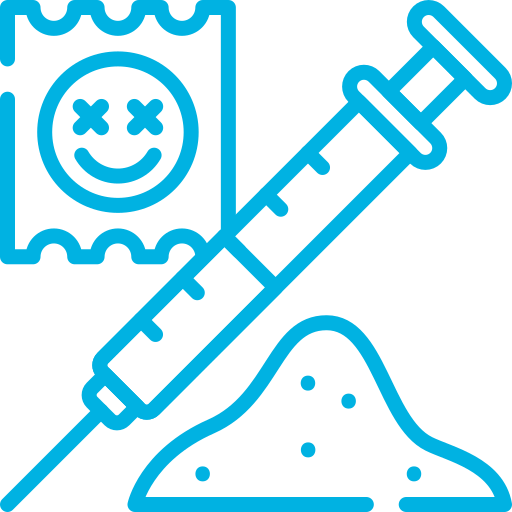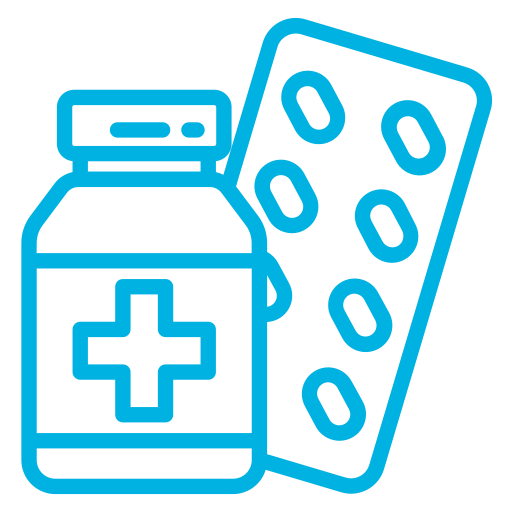Drug-driving crisis: collisions, casualties and deaths are increasing every year – we cannot afford to tolerate offenders any longer
Driving under the influence of both legal and illegal drugs is an issue that is growing on all measures in the UK - collisions and casualties have gone up by over 260% over the last ten years, and convictions are increasing every year. The impact is devastating, far-reaching, and only getting worse.
This is why IAM RoadSmart is campaigning to raise awareness and drive change to stop these trends continuing.
This issue was brought to the government’s attention in 2011 following a report into drink- and drug-driving1, and while some positive changes have been made, such as roadside testing, there is still a long way to go. With 44% of
offences being committed by previous offenders2, the current punishment and rehabilitation system clearly is not working.

IAM RoadSmart is dedicated to making the roads as safe as possible for all, we have seen success with other rehabilitation courses – with speeding courses, reoffending is as low as 5% (IPSOS), and with a drink-driving course, reoffences are at 17%2. We believe a standalone drug-driving awareness course would help drastically reduce the overall number of offences and casualties and help educate drivers about the potential risks on the road.
Years of cuts to road policing, rising costs and lack of prioritisation have created an environment where offences, and deaths, can rise. Drug testing is expensive and time-intensive, and the effects are hard to police rigorously as drugs and medications are diverse – as are the reasons for taking them before driving. Therefore, as outlined in a recent report3: ‘offenders who are suspected of driving while under the influence of drugs are being tolerated and allowed to present a continuing threat to communities.’ We cannot afford to tolerate this threat any longer.
How big is the drug-driving problem?

| Year | Collisions | Casualties |
|---|---|---|
| 2012 | 622 | 944 |
| 2013 | 594 | 921 |
| 2014 | 684 | 1,059 |
| 2015 | 881 | 1,414 |
| 2016 | 1,054 | 1,703 |
| 2017 | 1,151 | 1,892 |
| 2018 | 1,321 | 2,056 |
| 2019 | 1,469 | 2,278 |
| 2020 | 1,546 | 2,290 |
| 2021 | 1,661 | 2,497 |
Reported Road collisions: Driver / rider impaired by illicit or medicinal drugs. Source: Department for Transport
This chart depicts the concerning trend of drug-driving related collisions and casualties in the UK over a period of 10 years.
The data reveals a steep rise in drug-driving-related incidents in the UK, indicating a growing concern for public safety.
The government needs to refocus on the issue and find an effective and sustainable solution that can address the complexities of these offences, to stop the casualties increasing any further.
What are IAM RoadSmart asking for?

1. An outcome from the government consultation.
We have been waiting since last summer for the government to announce the results of its own consultation entitled “Protecting the public from repeat drug-driving offenders” so that we can all work together to help drug offenders tackle their issues.

3. Separate rehabilitation schemes.
We want drug-driving to be reprioritised as a standalone issue, and we are calling for an in-depth investigation, looking at all variables of impact and underlying issues that lead to the offence - recognising that it is a distinct issue from drink-driving.

2. Develop a course.
As the UK’s leading independent road safety charity, we want to work with the government and all interested parties to support the development of a rehabilitation option for drug-driving, with a particular focus on illegal substances, that is effective in reducing reoffences.

4. Support the prescribing process.
We want to work with partners, in government and the health sector, to raise awareness and advise on some of the potential outcomes that prescribed medications that can have an impact on a driver’s ability behind the wheel.
What do the public think?
- Our recent Safety Culture Report said that drug- and drink-driving is ranked as the highest priority issue that traffic police should prioritise reducing bad driving behaviour – with 60% placing it first.
- Our research of over 2,000 motorists shows that 1-in-10 people surveyed said they have driven or been a passenger in a vehicle where the driver has been under the influence of illegal drugs.
- Worryingly, 6% of people would be comfortable driving while under the influence of illegal drugs, and 14% of those surveyed stated that they would not stop a family member or friend who was planning to drive while under the influence of drugs.
- 28% of people surveyed are unlikely to avoid driving if taking over-the-counter medications, like antihistamines or cold and flu remedies, that come with a warning not to use heavy equipment/machinery.
- Almost 1 in 3 (31%) don’t know how long you can wait to drive after taking prescribed medication.
What do we mean when we talk about drugs?

Illegal drugs
- Driving under the influence of anything that impairs your driving ability can be hugely dangerous, but the unpredictability of illegal drugs makes it a gamble for you and other road users
- The nature of illegal drugs, as they are not regulated, means you can never know exactly what you are using, how strong it is, or how long it will be in your system – especially when some recreational drugs can stay in your system for days, or even weeks
- While all drugs have different psychological and physical effects, there can never be any illegal drug that improves, or is even safe, to drive with in your system
- Muscle twitches, reduced response times, and the heightened risks of catastrophic medical emergency associated with drug use can only lead to suffering when they happen behind the wheel – either resulting in conviction, collision, injury or death
- Drug use is a huge issue in society, but we urge people who may have taken something to not get behind the wheel to avoid a dangerous, potentially fatal, situation

Prescription medications
- Prescribed medication, while being much needed and beneficial to many people in the UK, can have unexpected and potentially serious impacts on driving ability
- Some everyday medications, for common health issues such as cold and flu, allergies, and pain, can drastically impair reaction times, judgement, and ability to concentrate when driving
- While healthcare professionals may not always specifically advise against driving when prescribing certain medications, we want to encourage patients to be aware of the risks, not only for themselves, but for others on the road
- We want to work raise awareness of what signs to look when you take your medication, and when to make the call to not get behind the wheel
1The Government's Response to the Reports by Sir Peter North CBE QC and the Transport Select Committee on Drink and Drug Driving (2011)
2Drug driving: the tip of an iceberg? Parliamentary Advisory Council for Transport Safety (PACTS), February 2021
3Her Majesty's Inspectorate of Constabulary and Fire & Rescue Services (HMICFRS) - Roads Policing Not an Option: An Inspection of Roads Policing in England and Wales (2020)
More news on drug-driving:
- Britain’s drug-driving crisis puts pressure on A&E departments
- Britain’s drug-driving crisis: with thousands of casualties on our roads, it’s time for the government to act
- Drug driving problem among younger motorists reaches epidemic levels
- More than a quarter of drivers say there are instances where it is okay to drink or drug drive
- Drink and Drug Driving Research - Nov 23
Listen to us live:
Northern Visions TV:
London Live:
BBC Surrey:

